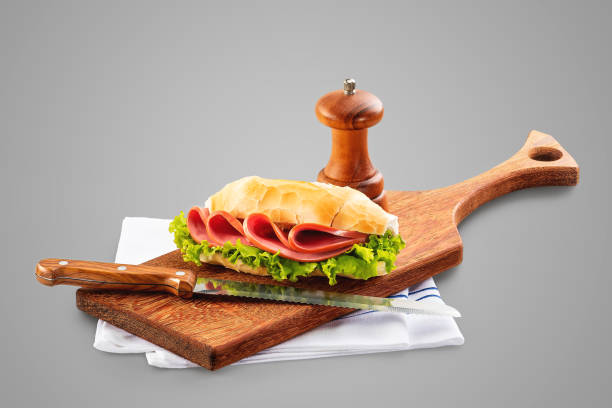In December 2004, my husband proposed to me under the Eiffel Tower. He proposed, and I may have been too busy with our plans to say yes. But he got it, and we told our families the good news. The engagement and subsequent swoon are an excellent way to fall in Paris. And we did. The following year, we spoke about French culture, food, wine, mood, and diet with near obsession. We are surprisingly Francophile for two Jewish kids who grew up in the suburbs of New Jersey.
Hitched and happily ever, we finally had a chance to return to Paris in March of this year for an all-the-vacation-we-could-squeeze-in four-day weekend. We were not armed with life-changing questions or bling but rather a list of unambiguous recommendations. Some came from friends, while others were culled from French blogs. Poilane Bakery was at the top of the list, and their sable cookie [Punitions(r), a favorite of Clotilde.
The sables, translated as “punishment,” are buttery, mildly sugary, and have a golden edge. They’re far from what they mean. The grandmothers would give these to their grandchildren as an after-school snack, teasing them, “Come and get your penalty!” Is a single butter cookie enough to make a trip worth it? Do I have to say what I think about this?
I found the book with the original recipe only a few weeks ago. However, it wasn’t until then that the perfect occasion to bake these cookies arose. They were easy to roll out and make. Besides a few minutes in the fridge, they are some of the easiest I’ve ever made. Inspired by Jenjen’s stunning photography, I stuffed them with bittersweet ganache. As an American, I don’t think they need it. But as a baker, I must not know when to leave well enough alone. I can assure you that nobody complained.
At room temperature, 1 1/4 sticks of unsalted butter (5 oz, 140 g). [I used salt, but that’s my preference and food for another post.]
Sugar, 1/2 cup (125g), slightly rounded
One large egg at room temperature
2 cups (280 g) all-purpose flour
Add the butter to the work bowl of an electric food processor* with the metal blade. Process, scraping the sides as necessary until it is smooth. Add the sugar and function and scrape the bowl until the butter is thoroughly mixed. Process the mixture, scraping down the bowl as necessary, and add the egg. Add the flour immediately and pulse it 10 to 15 times until you get clumps, curds, and a streusel-like texture.
The dough should be rolled into a ball. Divide the dough into two halves, form each into a disc, and then wrap the disks with plastic. If you have time, cool the disks for about four hours. You can also roll out the dough immediately if you rush. It will be slightly stickier but still OK. If wrapped tightly, the dough can be refrigerated or frozen for up to a month. )
Preheat the oven to 180degC (350degF) and place the racks in thirds. Line two baking sheets on parchment paper.
Roll out the dough on a lightly floured surface, one disk at a time. The thickness should be between 1/8 inch and 1/4 inch (4-7 mm). Cut out as many cookies with a 1-1/2-inch round cutter (4 cm). Place them on the lined sheet, leaving a space of about one inch (2.5cm). You can roll the scraps into a disc, chill them, and cut and bake them later.
The cookies should be baked for 8-10 minutes or until they have a pale color and are almost set. If some cookies are thinner, they may brown at the edges. M. Poilane approves. He would tell you that the little spots of the color show they were made by hand. Cool the cookies on cooling racks until they reach room temperature.
Plan: Cookies can be stored at room temperature in an airtight tin for five days or frozen for one month.
Greenspan recommends using a food processor to get plain cookies’ “distinctive sandy texture” characteristics. And yes, she does say it in a way I love.

